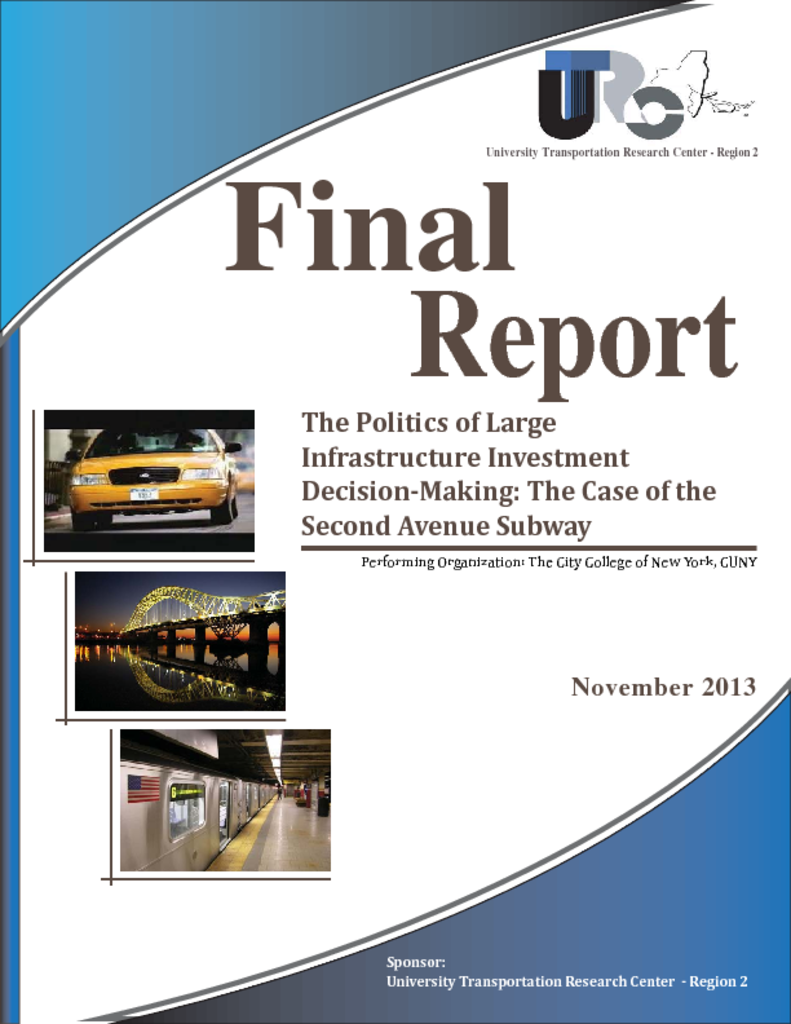Over the past few decades, urbanization and economic growth have intensified the need for more efficient urban and regional transportation, including the expansion and reorganization of existing transportation networks. Given such huge investments and severe constraints on resources such as financial and land, infrastructure projects require a careful prioritization and selection among available alternatives. In reality, project selection appears to be determined as much by politics as by transport-economic considerations. This paper traces the politics of megaproject decision-making of the Second Avenue Subway (SAS), a subway project in New York. The project’s first stage is currently being built after nearly 100 years of effort. In particular, the authors examine whether project-related decisions were the results of power struggles between the involved actors, and less the results of transportation planning concerns. They argue that the re-organization of transportation institutions, specifically the formation of the Metropolitan Transportation Agency (MTA), enabled the selection and implementation of SAS. While transportation agencies are bound by the legal and bureaucratic rules set by those who create them, they have their own agendas and are crucial for project selection. If successful, as in the case of the Second Avenue Subway, they can establish political momentum against political and fiscal adversity. Against the background of this project’s long planning and failure history, we find that besides the creation of the MTA, the following factors contributed to the project’s eventual success: 1) the long project history bestowed a “legendary” character upon the project; 2) a “window of opportunity” opened up for inner-city projects after September 11; 3) a strong set of project champions advanced the project; and 4) the nature of funding arrangements was instrumental to this project’s success.




